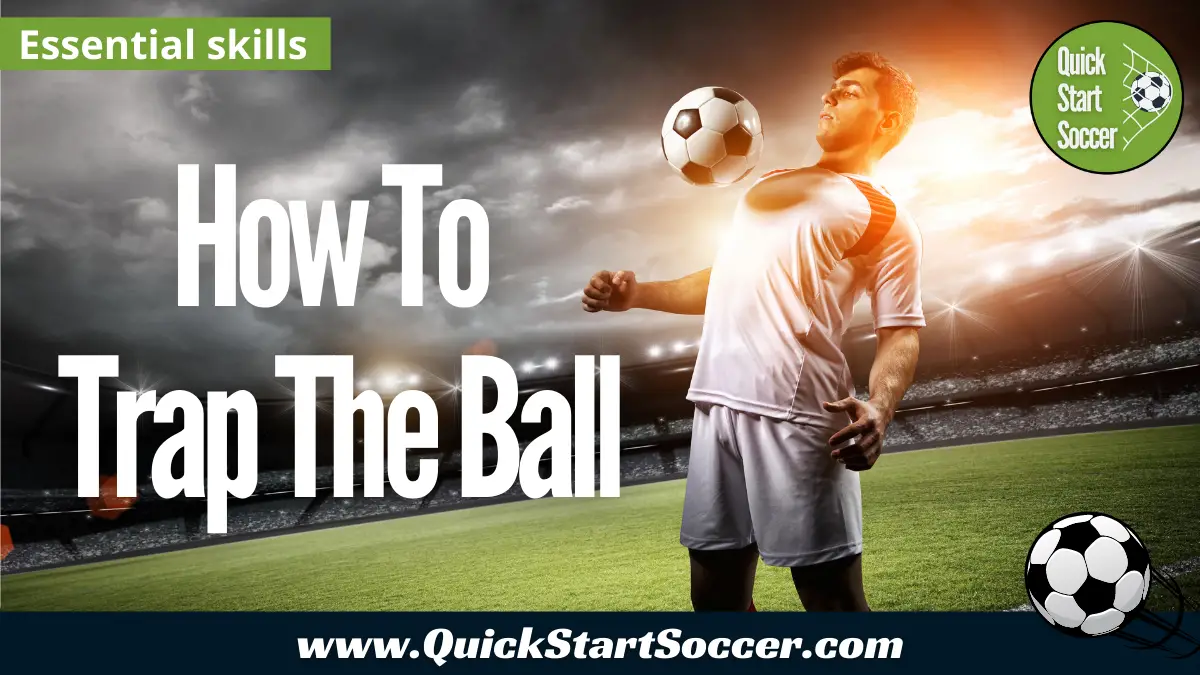How To Trap A Soccer Ball
Trapping a soccer ball, also known as ‘controlling’ or ‘receiving’, is an essential skill which all players should try to master. In this post, we will describe in detail how to trap a soccer ball, the different parts of the body you can receive the ball with, and some other tips and tricks to help you and your players successfully trap and control the ball to retain possession. First, let’s look at what trapping is.
What Is Trapping In Soccer?
Trapping in soccer referrers to stopping and gaining control of the ball after receiving a pass from a team mate or from a misplaced pass from an opponent. Trapping is also known as ‘receiving’ or ‘controlling’ the ball. By successfully trapping a soccer ball, a player gains control of the ball and can quickly make the next move.
As with many techniques in soccer, context is key! Your position on the field, the position of your teammates, the position of your opponents, and the flight of the ball are all important when deciding how to trap the ball and which part of the body to use.
Different Types Of Traps
A player can trap the ball with any part of the body apart from their hands and arms, however the main body parts used when trapping the ball are the chest, the thigh, the inside foot, outside foot, and sole of the foot. Let’s take a look at how to do each of these types of soccer traps.
How To Trap A Soccer Ball With Your Chest
The chest is often used to receive the ball when the ball is in the air. If there is enough time and space, a player should aim to get the ball down to the ground and to their feet as quickly as possible to give them the most options for their next move.
To trap a soccer ball with your chest, lift your arms and elbows up away from your body and expand your chest to make it as big as possible. As you make contact with the ball, contract your chest to slow down the pace of the ball and cushion it towards the ground.
How To Trap A Soccer Ball With Your Thigh
The thigh is another body part you can use to receive the ball when the ball is in the air. When trapping a ball with their thigh, a player should aim to get the ball down to the ground as quickly as possible so they can then do some magic with their feet.
To trap a soccer ball with your thigh, first align your full body with the flight of the ball as it comes towards you. Next, lift your thigh up in preparation for receiving ball and then, as you come into contact with the ball, bring your thigh back down to cushion it towards the ground and your feet. You should aim to get the ball to land about half a yard away from you so that you can keep your head up and make a decision as to what to do next.
How To Trap A Soccer Ball With Your Foot
A player can use their foot to trap the ball when receiving the ball along the ground or slightly above the ground. The part of the foot a player should use to control the ball depends on the players body position, their opponent’s position, the direction in which the ball is coming from, and the direction in which you want to go.
As with the other traps described above, when trapping the ball with your foot, the important thing to remember is to cushion the ball to slow down the pace of the ball. You should aim to cushion the ball so that it remains close to your feet, but not too close that you can’t make your next move without another touch. In other words, you should aim to control the ball so that it lands in a such a way that you can immediately execute your next move.
Decision Making When Trapping The Ball
As was hinted at throughout this post, decision making plays an important part when trapping the ball. Deciding which type of trap to make and where to make the ball land, depends on whether the ball is in the air or along the ground, the position of your opponents, and the position of your team mates.
Over time, players will develop a sense of which trap to use in different situations, but when learning for the first time it’s important for coaches to highlight this decision making process. To do this coaches often talk about playing with your head up or even with your head ‘on a swivel’. This way players can make a good and quick decision about to do with the ball before they even receive it.

